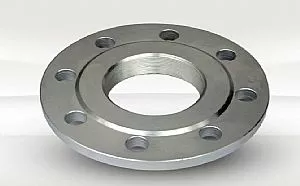Factors that Cause Flange Sealing Leakage in Refinery
Flanges are the most common connection components between refinery equipment and pipes. Most materials in refinery are poisonous, flammable and corrosive, once the sealing of flange is invalidated, these dangerous materials will be leaked out and cause severe fire and injuries and deaths. Therefore, great importance must be attached to the sealing of flange.
I. Flange
1.Surface sealing types of flange
(1)Plate sealing surface. The plate sealing surface is smooth and has 2 or 3 concentric grooves, when tightening the bolts, gaskets is easily to squeeze to both sides. Flanges with this kind of sealing surface are just suitable for low pressure, non-toxic and non- explosive environments.
(2)Irregular sealing surface
The irregular sealing surface consists of a concave surface and a convex surface; gaskets will not be squeezed and can be used in situations with higher pressure.
(3)Birch groove sealing surface
The gaskets of this sealing surface is in the middle of the groove and unmovable even been squeezed. Flange with this sealing surface has complicated structure and it’s difficult to replace the gaskets. Generally, the flange is used for situations with toxic materials and high pressure.
2. Requirements for flange sealing surface
The major requirement is the roughness of surface. The sealing surface with metal gaskets needs lower degree of roughness; on the other hand, the soft gaskets needs higher degree of roughness, all these requirements are in order to avoid the leakage. The sealing lines in flanges are also aim to prevent leakage.
3.Stiffness of flange
Insufficient stiffness of the flange will cause distortion or deformation about flange which leads to invalidate sealing.
Ⅱ.The gaskets
1. Function of gaskets
Gaskets are an important part for flange sealing and have a direct impact on the sealing performance. The gaskets should have a dense material and can withstand the pressure and corrosion, also should have relative resilience. The gasket with better resilience can adjust the changing pressure and the dense material can prevent leakage and resistance to corrosion.
2. Difference in hardness between flange and gasket
Flange sealing is mainly through gaskets to have elastic or plastic deformation, so as to fill the tiny uneven places on surface which can prevent leakage. The hardness of gaskets should lower than flange, and within the allowable range, the greater difference of hardness, the better sealing effect.
Ⅲ.Using conditions
Using conditions here is mainly referring to pressure, temperature and physical and chemical properties of material. Single factor like pressure is not the major impact to sealing, only when pressure combine to temperatures, especially the high temperatures can heavily influence the sealing. Under high temperatures, the corrosive material and medium will accelerate the corrosion speed to gaskets and cause the looseness of flanges and bolts, all of these will increase the possibilities of leakage. Similarly, under the low temperatures, the different cooling speed of flanges and bolts will also cause the leakage. Thus, the stable temperature is required and avoids the severe fluctuation of pressure and temperature. Remember to tighten bolts after using flange for a certain time which is especially significant for conditions having heat temperature and thermocycling.
Ⅳ. Installation
Keep clean of the flange surface, any gaskets with mechanical damage and corrosion damage is not allowed. Check the roughness of surface and the gap with two flanges. Examine the shape, material and diameters of gaskets to ensure it’s meet certain requirements. Place gaskets in the appropriate position and tighten the bolts and check whether it has been installed correctly.

Related News
- Low-Temperature Flange Sealing Solutions for Cryogenic Chemical Pipelines
- Innovative Technology for Automatic Alignment in Underwater Flange Assembly
- Stamped Steel Slip-On Flanges
- Design and Finite Element Analysis of Anchor Flanges for Oil & Gas Pipelines
- Forming and Manufacturing Technology of Anchor Flanges
- Structure and Materials of Anchor Flanges
- Flanges for Pressure Vessels
- An Introduction to Socket Welded Neck Flanges
- Heat Treatment & Mechanical Properties of ASTM A350 LF3 Flanges (Part Two)
- Heat Treatment & Mechanical Properties of ASTM A350 LF3 Flanges (Part One)

